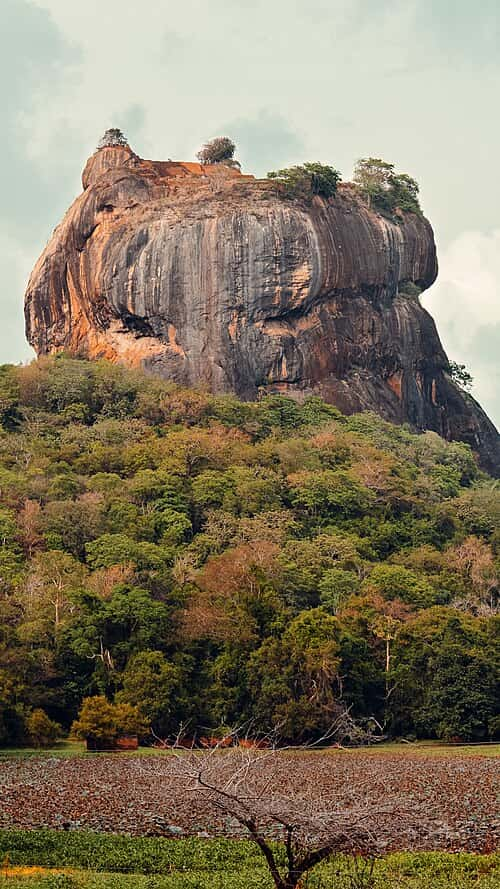(1)(1).jpg)
Sigiriya (Lion Rock)
Sri Lanka, an island off the South Eastern coast of India, occupies a distinctive place in South Asia’s historical and cultural landscape. Known as the "Pearl of the Indian Ocean," Sri Lanka has been shaped by centuries of Buddhist influence, maritime trade, and colonial encounters. It is home to a diverse population and a legacy of advanced ancient civilisations, particularly evident in its art and architecture. Among its many cultural treasures, Sigiriya stands as a particularly striking symbol of Sri Lanka’s historical complexity and architectural brilliance.
Sigiriya is a geological formation that rises approximately 180 metres above the surrounding plains. In the late 5th century CE, it was transformed into a royal citadel by King Kashyapa I, who had seized the throne through the murder of his father, fearing rebellion from his half-brother, Moggallana. In choosing Sigiriya, Kashyapa was not simply seeking refuge; he was asserting power through the height that this high point offered. The site is originally believed to have been a monastic settlement dating back to the 3rd century BCE, and the king’s repurposing of this sacred ground into a fortress-palace reflects the layered history that defines the location.
Sigiriya is an architectural and urban planning marvel. At its summit, the remains of Kashyapa’s palace and its defensive structures highlight the military logic of the design, while its pleasure gardens and bathing pools suggest a deliberate blend of power and leisure. Perhaps the most iconic feature of Sigiriya was the Lion Gate, a monumental stone structure halfway up the rock, through whose jaw visitors ascended a stairway to the upper terraces. Although only the massive lion’s paws survive today, they hint at the grand entrance that once crowned the site.
The site also features an extensive water management system. The symmetrical layout of the gardens, along with their fountains, moats, and reservoirs, reveals an advanced understanding of landscape design and hydraulic engineering. To date, the water collected from rain is utilised by the water system to irrigate the gardens around. Sigiriya is also celebrated for its exquisite frescoes, painted directly onto the rock face under a sheltered overhang. These depictions of female figures, often interpreted as apsaras, stand among the finest examples of ancient South Asian painting. Another striking feature is the Mirror Wall, which was once so highly polished that it reflected the viewer’s image.
After King Kashyapa died in 495 CE, Sigiriya was abandoned as a royal residence. It was subsequently reclaimed by Buddhist monks and functioned once again as a monastery until the 14th century. Today, Sigiriya is recognised as a UNESCO World Heritage Site. It continues to stand not only as a monument to political ambition but as a testament to the richness of Sri Lanka’s cultural heritage.


